It’s been a long time since I posted something new about one of my game projects. But still I was not idle. I’ve started a mobile game based on Godot in the last weeks, worked on another non-PC game concept and finally made some progress on some very big points for Tribes. The screenshot that marks this article has numerous new features hidden in the detail view, all of which I’ll briefly introduce here.
There is now versioning
Starting with this build, I’m starting to create versioning for the game to better separate, manage and merge data in the future. What I do as a WebDev all the time anyway, can’t hurt as a game developer. Let’s start with version 0.1
There is now a first title screen
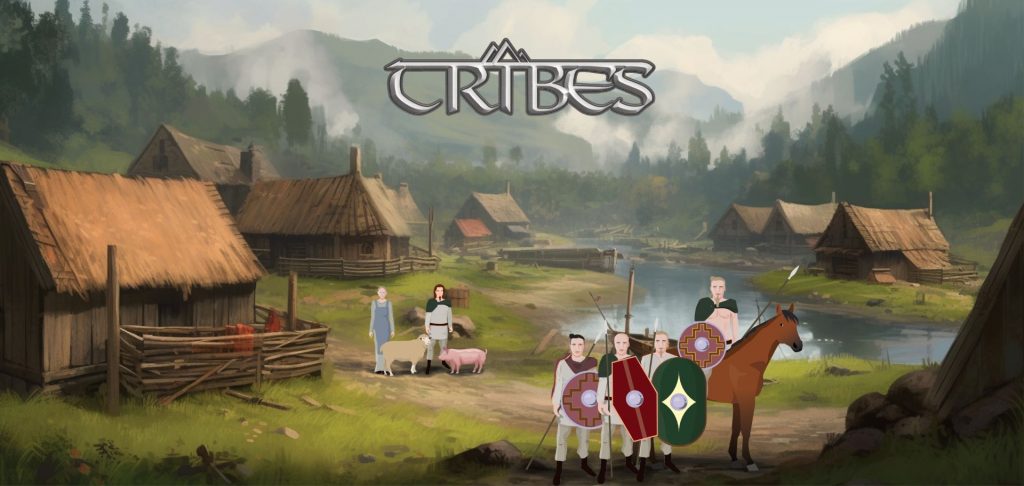
I drew the characters myself with Affinity as vector illustrations. The background was generated to match the midjourney. In fact, it shows that more and more content can be solved via AI. It’s an exciting time to be living in. Not only research, but also image generation and code helps are partly running on AI.
Field economy and economic fields
On the screenshot you can see that I basically reworked the food system. Previously, I had in mind a historically correct version, where each household would have a small field and garden area next to their own longhouse. This probably reflects more the actual circumstances of the time. However, it takes a lot of fun out of the game, since you never see fields, don’t witness their growth, and can’t make any decisions regarding placement.
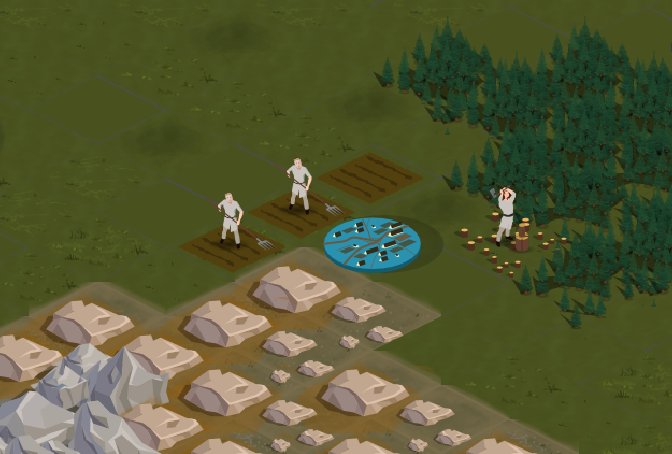
Instead, I decided to move farming from the settlements to the surrounding countryside. There are several versions of fields here:
- Arable fields for barley and vegetables: they produce food. However, the fertility of the soil decreases over time, so you have to change fields. If you leave the field fallow or let the animals graze on it, the soil recovers. However, you may not be able to avoid leaving the place at some point. Especially as the population grows. But this probably corresponds to the actual settlement behavior of the Teutons.
- Lumberjack: If you have a forest, you can cut wood there. This is needed for the construction of buildings, weapons and as heating material for the households.
- Mine: The mine can be built where ore deposits are found. There the ore is excavated and then processed into iron in racing furnaces in the settlement. Iron can be used to make weapons and tools. A similar production chain is planned for gold.
Activities
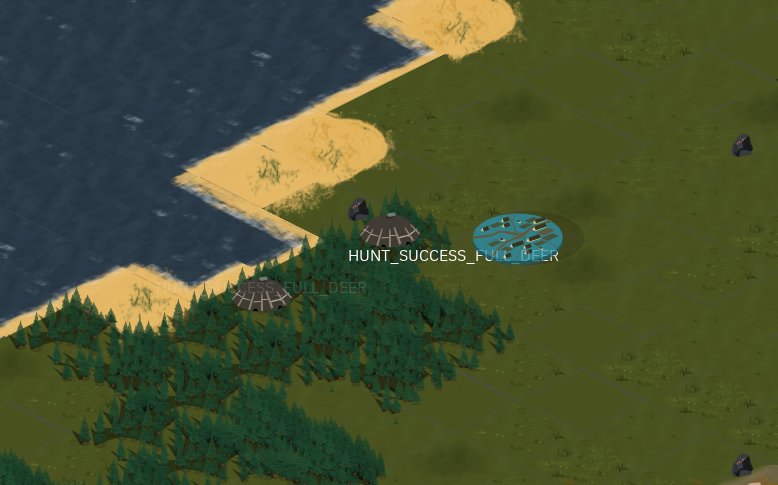
In contrast to fields, activities are those player decisions that do not take place permanently at a position and thus do not permanently cultivate a field. Nevertheless, activities also need some inhabitants, which are then no longer available for other things. As the first activity I added hunting. If there are shortages of food, hunting is a suitable way to get food comparatively fast. Only armed men and nobles may participate in hunting. How the hunt is treated more exactly, I want to present in an extra post.
Advisors

You can now declare inhabitants to be advisors. These enjoy a very high reputation in the community and can, depending on their specialization advice give, on which the players would not have come otherwise perhaps. However, they are then no longer available for their original task. Also, like nobles, advisors want to be kept happy.
Finally mountains
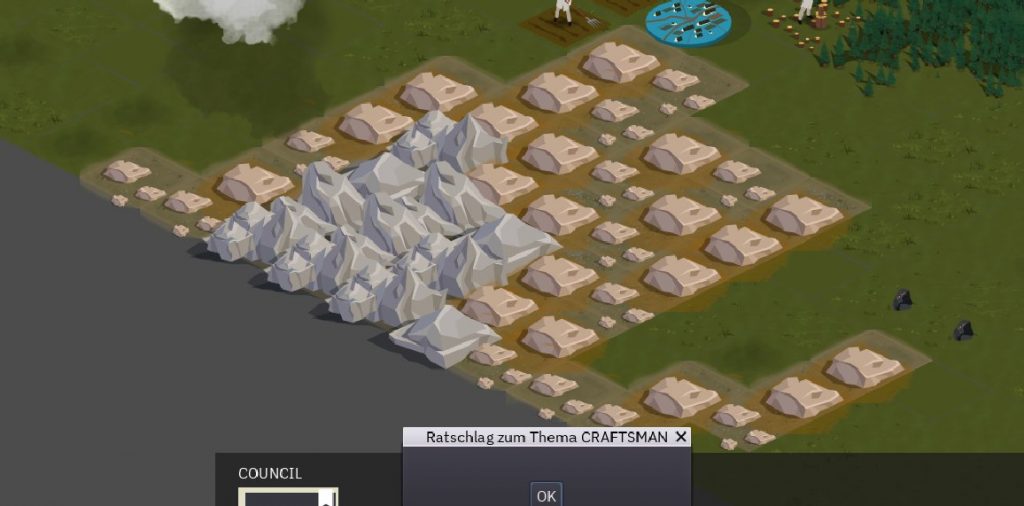
With the update 0.0.1 there are now finally mountains and hill landscapes, which are optically also clearly recognizable as such.


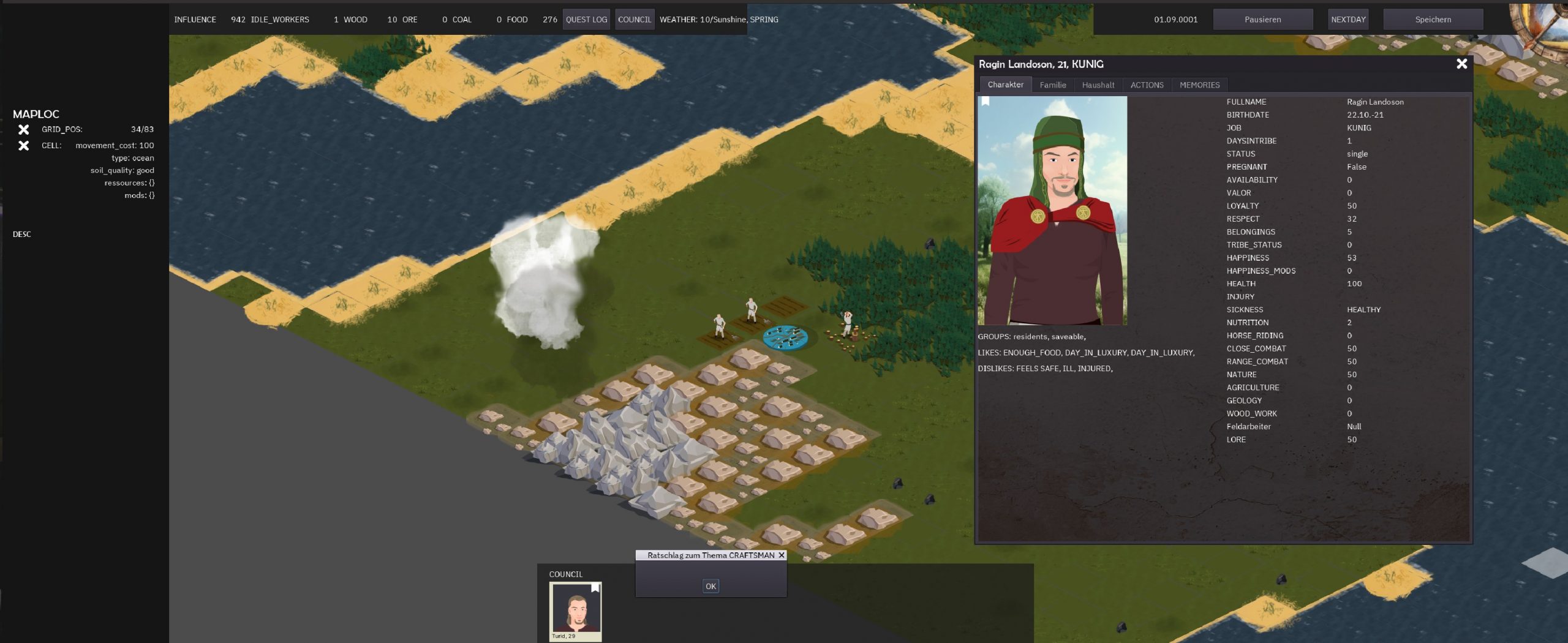
Leave a Reply